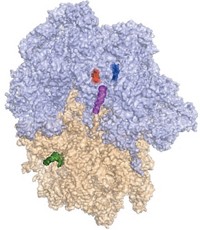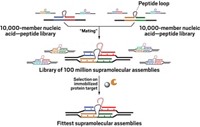Advertisement
Grab your lab coat. Let's get started
Welcome!
Welcome!
Create an account below to get 6 C&EN articles per month, receive newsletters and more - all free.
It seems this is your first time logging in online. Please enter the following information to continue.
As an ACS member you automatically get access to this site. All we need is few more details to create your reading experience.
Not you? Sign in with a different account.
Not you? Sign in with a different account.
ERROR 1
ERROR 1
ERROR 2
ERROR 2
ERROR 2
ERROR 2
ERROR 2
Password and Confirm password must match.
If you have an ACS member number, please enter it here so we can link this account to your membership. (optional)
ERROR 2
ACS values your privacy. By submitting your information, you are gaining access to C&EN and subscribing to our weekly newsletter. We use the information you provide to make your reading experience better, and we will never sell your data to third party members.
Materials
Cell-Mediated Computation
Synthetic Biology: Engineered cells can be combined into complex circuits, researchers show
by Celia Henry Arnaud
December 13, 2010
| A version of this story appeared in
Volume 88, Issue 50

Scientists have moved a step closer to being able to program cells as they would program computers. Two independent groups show it is possible to distribute biological “computations” over multiple cells that perform different logical functions and communicate with one another through signaling molecules that serve as chemical “wires.”
The ability to divide computations among different cells means the cells can be used to build circuits analogous to those in electronics. The idea is to be able to harness the power of biology to create sensors and other useful devices.
“We’re proposing a very simple circuit to be the building block of constructing programs in bacteria,” says Christopher A. Voigt of the University of California, San Francisco, who led one team. That simple circuit is a NOR gate, which is on only when both of its inputs are off. NOR gates are unusual in that they can be combined to form any of the other gates in Boolean logic.
For their NOR gates, Voigt and coworkers use pairs of promoters to control the production of gene repressors (Nature, DOI: 10.1038/nature09565). When both promoters—the gate inputs—are present, the repressor is turned on and the gate does not produce its output (expression of a gene). In the absence of the promoters, the repressor is also inactive and the gene is turned on. The DNA sequences for the promoters, repressors, and genes are incorporated in the bacteria via genetic engineering.
Bacteria can be genetically modified so each strain is a different logic gate. The gates are wired together by chemical signals between cells. The product of one gate diffuses to and becomes one of the inputs for the next gate in the circuit. The spatial arrangement of different strains determines the output of the overall system.
In separate work, Ricard Solé, Francesc Posas, and coworkers at Pompeu Fabra University, in Barcelona, show that a small number of different types of cells can be combined to create a large number of different circuits with different functions (Nature,<a href="http://www.nature.com/nature/journal/vaop/ncurrent/full/nature09679.html"> DOI: 10.1038/ nature09679</a>). “We can use [cells] in a combinatorial way,” Solé says. “Potentially we can generate thousands of different circuits and so implement thousands of different functions.”
The Spanish team engineered yeast cells and combined them in various ways to perform specific logic functions, such as multiplexing and one-bit binary addition with carry.
The findings from both teams “represent significant advances in the number and types of logical operations that cell consortia can perform,” says Justin P. Gallivan of Emory University. “Some of the next big challenges include developing more robust networks that can respond to a wider variety of small-molecule inputs and produce more sophisticated output signals.”





Join the conversation
Contact the reporter
Submit a Letter to the Editor for publication
Engage with us on Twitter